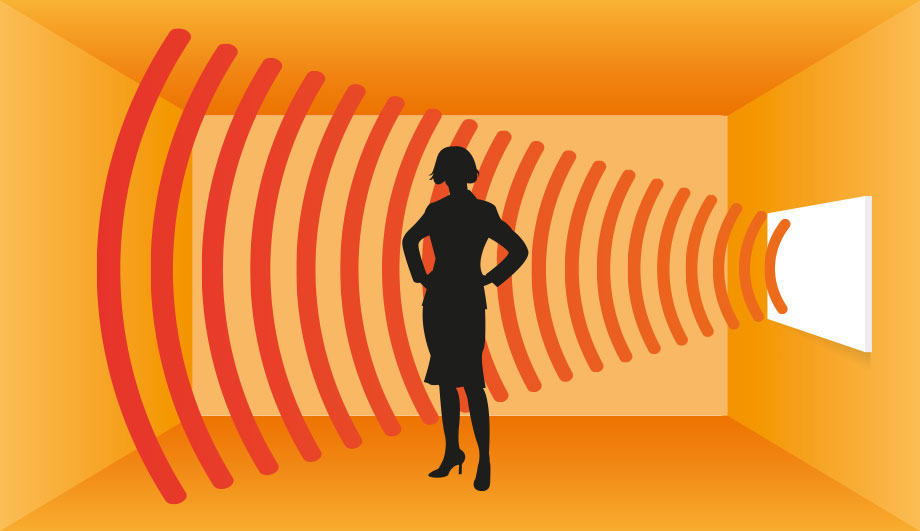Infra-red heating is a curious technology, if you have a traditional property is should be approached with caution. Get it wrong and you will spend the next few years mopping the condensation off from your wall, wondering what on earth is going on.
Traditional buildings appear to have a very simple form of construction, sometimes it requires a bit of an effort to convince people that there are complex processes that need to be considered. A survey this week provided the perfect demonstration of what can go wrong.
.

.
Whatever type of building you have, it is important that you take into account a wide range of factors before introducing new technology. Heating must be balanced with the type of building construction and insulation that is present and the ventilation strategy for both interior spaces and within the structure. Your lifestyle is also an important consideration.
Traditional stone walls are very breathable, allowing moisture to escape from buildings and maintaining a healthy environment for the occupants. Being made of stone, you will appreciate that the structure is solid and heavy. They have what is called a High Thermal Mass. They absorb heat slowly gradually warming up. They also store heat very well and once they have warmed up, they also cool very slowly. Once the fire goes out in the room, the heat is retained and the room will stay warm for a long time. This is in contrast with modern houses that have a Low Thermal Mass. They heat up very fast, but the don’t store any heat, and cool down very fast. As soon as you switch the heating off, the temperature will drop quickly.
.

.
The principals of Infra-red heating are that it quickly heats the building occupants and surface, rather than the air within a room. This makes it more energy efficient, particularly if you have a modern building with low thermal mass than can respond quickly. The walls of a traditional building will respond much more slowly.
The temperature of the air within the building is important. The colder the air is, the less moisture it can hold. As people breath in and breath out, the moisture in their breath gradually saturates the air and cold air will become saturated much more quickly. As soon as saturated air comes into a contact with a cold surface, it condenses, causing droplets of water to run down the surface of the walls. Here we come to the second problem, because the infra-red heating does not heat the air, and the heavy walls and ceiling take longer to heat up in a traditionally building, the cooler wall surfaces will accentuate the levels of condensation that will occur.
As if this wasn’t bad enough, in order for a traditional stone wall to breathe effectively, it require a reasonable temperature difference between inside wall surface and the outside wall surface. This temperature difference drives moisture through the wall, where it can evaporate externally. Driving this moisture through the wall is important for keeping it dry and warm.
When the internal wall surface is cool, and closer to the external temperature, then this breathing process stops. The moisture is absorbed into the wall, but it doesn’t go anywhere. The moisture gradually builds up, making your wall damper and colder, further exaggerating the problem. It’s a vicious circle. Dampness in buildings can lead to all sorts of other problems, mould growth, rot and breathing problems to name a few.
.

.
Before you start making changes to the insulation or heating in a traditional property, get some expert advice, its an awful lot cheaper than investing in a heating system that will have to be taken out again and replaced in a few years time, not to mention all the other damage that is being done to the health of your property and your family.
.
MAAC studio are accredited conservation architects and principal designers working with traditional buildings throughout Scotland.
If you need independent advice give us a call ?


